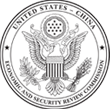November 2020 Trade Bulletin1.11 MB
Highlights of This Month’s Edition
- Bilateral trade: In the first three quarters of 2020, the U.S. goods trade deficit was $223 billion, down 5 percent year-on-year, with agricultural exports to China up 92.8 percent from last year; in Q2 2020, the U.S. services surplus with China reached $11.7 billion, a record low due to the COVID-19 pandemic.
- Policy trends in China’s economy: At the Fifth Plenum, the CCP stressed economic self-reliance and stronger domestic innovation; China’s new Export Control Law has a broad scope that creates the potential for arbitrary restrictions on Chinese exports, extraterritorial reach, and retaliation against foreign exporters and end users; China’s government introduced the digital RMB; the new Chengdu-Chongqing regional integration plan reflects a multiyear strategy of fostering economic development centered on innovation and exports.
- Quarterly review of China’s economy: China reported GDP growth of 4.9 percent year-on-year in Q3, but a sluggish recovery elsewhere in the world and concerns over debt could undermine growth going forward; this year’s “Golden Week” saw a return to consumption, though indicators point to worsening income disparities.
- Financial markets: Suspension of blockbuster Ant Group IPO underscores the CCP’s control over private enterprise in China.
- In focus – Trends in supply chain realignment: Preliminary data and anecdotal evidence suggest the complete uprooting of supply chains out of China is unlikely, with gradual diversification emerging as a more prominent trend.
